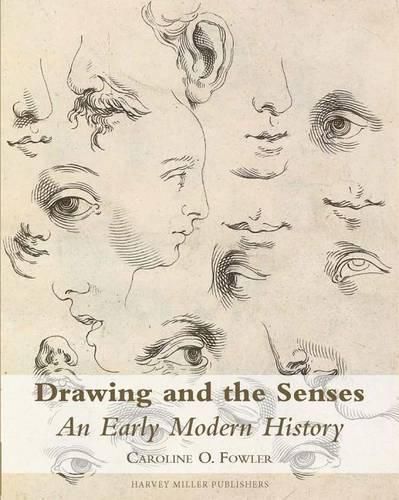Readings Newsletter
Become a Readings Member to make your shopping experience even easier.
Sign in or sign up for free!
You’re not far away from qualifying for FREE standard shipping within Australia
You’ve qualified for FREE standard shipping within Australia
The cart is loading…






Jusepe Ribera (1591-1652), Guercino (1591-1666), Stefano della Bella (1610-1664), Abraham Bloemaert (1566-1651), and Peter Paul Rubens (1577-1640) all created printed drawing lessons dedicated to the practice and theory of drawing. These artists composed wordless compositions on a page of eyes, ears, hands, mouths and noses, configurations that were ostensibly meant to teach the practice of drawing. Yet as this book argues, these were not only pedagogical treatises on practice but also theoretical works on draftsmanship made by the most influential European draftsmen. This book is the first theoretical consideration of these major works. Reading these treatises in the context of an early modern intellectual history of the senses, this book examines how artists visually theorized the process of producing knowledge through making lines on a page. Beginning with the pedagogical treatises of Albrecht Durer and progressing through the pedagogical writings, drawings, and printed drawing books of early-modern draftsmen, this book traces a history of the senses and drawing, demonstrating how shifting concepts of the body, divinity and god changed the processes by which artists conceived of drawing the world, themselves and others.
$9.00 standard shipping within Australia
FREE standard shipping within Australia for orders over $100.00
Express & International shipping calculated at checkout
Jusepe Ribera (1591-1652), Guercino (1591-1666), Stefano della Bella (1610-1664), Abraham Bloemaert (1566-1651), and Peter Paul Rubens (1577-1640) all created printed drawing lessons dedicated to the practice and theory of drawing. These artists composed wordless compositions on a page of eyes, ears, hands, mouths and noses, configurations that were ostensibly meant to teach the practice of drawing. Yet as this book argues, these were not only pedagogical treatises on practice but also theoretical works on draftsmanship made by the most influential European draftsmen. This book is the first theoretical consideration of these major works. Reading these treatises in the context of an early modern intellectual history of the senses, this book examines how artists visually theorized the process of producing knowledge through making lines on a page. Beginning with the pedagogical treatises of Albrecht Durer and progressing through the pedagogical writings, drawings, and printed drawing books of early-modern draftsmen, this book traces a history of the senses and drawing, demonstrating how shifting concepts of the body, divinity and god changed the processes by which artists conceived of drawing the world, themselves and others.